Since I started playing Magic The Gathering over a decade ago, Planeswalkers have easily become the most iconic card type in the game. That’s why it’s more important than ever if you are just starting to play Magic to understand what is a Planeswalker and how do Planeswalkers work.
As a whole, Planeswalkers are spells that players can cast and enter the battlefield as legendary nonland permanents. Each Planeswalker will have loyalty counters that can be spent to activate Loyalty abilities once per turn.
Where things can get a little confusing is understanding the difference between a Planeswalker card and what a Planeswalker is in terms of Magic The Gathering’s lore.
For example, according to the lore of Magic The Gathering, every time you are playing a game of Magic, you (The player) are a Planeswalker.
However, that doesn’t mean in-game rules that affect Planeswalkers affect you as a player, nor does it mean Planeswalker cards are treated as “Players” during a game.
Confused yet?
Don’t worry if that’s the case. We’ve all had to learn this as players of Magic The Gathering at some point and this post is designed to help clear up any confusion around the matter.
This crash course on everything you need to know about Planeswalkers will have you ready to start summoning Planeswalkers in your games of Magic in no time!
What Is A Planeswalker?
Within Magic The Gathering’s storyline, Planeswalkers are mages that can travel throughout the multiverse to different worlds. Planeswalkers often act as the main characters of the Magic The Gathering stories.
Through Planeswalker characters, we can explore new worlds vicariously through them as they travel throughout Magic’s multiverse.
Planeswalkers haven’t always been a physical card type that you could play in Magic The Gathering games; they were introduced much later on after the game was first released in Magic’s “Lorwyn” set in 2007.[1]
Before their official release as cards, Planeswalkers were just fictional characters in the story, and you, the player!
It was part of Magic The Gathering’s original marketing strategy to consider players as Planeswalkers while they were playing the card game. When you play a game of Magic, just like the Planeswalkers in the Magic’s stories, you are using mana and casting spells against one another.

This marketing element of players roleplaying as Planeswalkers battling each other was likely heavily inspired by the other intellectual property owned by Wizards of the Coast, “Dungeons & Dragon”.
If you have never had the pleasure of seeing how the Magic The Gathering marketing team visualize a duel between Planeswalkers, then I beg you – check out this Promotional video below that their team put together for the 1995 set “Ice Age.”
I can’t watch the video without smiling.
Although the marketing focused on players being considered Planeswalkers within the lore of Magic The Gathering has somewhat reduced, the concept still exists and has not gone completely away.
It’s helpful to know about this as it has helped me more than once fight off confusion in conversations about Planeswalkers, to know that a person could be referring to the characters that are Planeswalkers or the Planeswalker card type.
What Is A Planeswalker Card: [Intro, Symbol, Cards]
With the release of the “Lorwyn” set in 2007, players were introduced to physical Planeswalker cards for the first time, and shortly after the Planeswalker symbol.
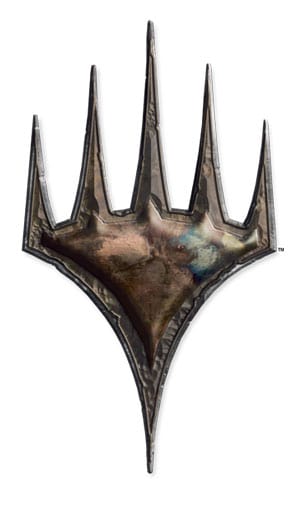
The Planeswalker symbol is symbolic of the 5 colors of Magic working in unison with one another.
Planeswalker cards are spells that can be cast for mana like any other normal spell in Magic The Gathering.
However, Planeswalker spells are a unique card type that once successfully cast, enters the battlefield with a predefined amount of Loyal counters, and stays on the battlefield as a Planeswalker permanent until they are removed from play.
Planeswalkers used their loyalty counters as a resource system that determines what loyalty abilities they can activate each turn.
The loyalty counter mechanic also acts as a Life-point/Hit-point system that allows players to attack Planeswalker cards in play in order to remove them from the battlefield.
This ‘lowering loyalty through damage’ system for Planeswalker was taken from a concept known as “structures” that was never fully released in the game.
If you are interested in a full guide on how Planeswalker Loyalty counters work and the different types of Loyalty abilities that Planeswalkers can have, you can check out my full post about it here – How To Use Planeswalkers [Abilities, Loyalty Counters]
With Planeswalkers seemingly becoming even more important in the game of Magic I have tried to answer some of the most common questions I get asked about Planeswalkers from new players below.
Hopefully, by reading the answers to these common questions I have put together, you should be able to cast Planeswalker cards confidently in your games of Magic and focus on how to best use them to help you win more games!
Are Planeswalkers Considered Players: [Marketing, In-game]
Planeswalkers are not considered to be players. Only you or your opponents are considered to be players during a game of Magic The Gathering. Rules text on a card that states the word “player” will have no impact on Planeswalker cards or permanents.
This misunderstanding and line of thinking often come from the fact in Magic’s original marketing of the game, players were considered to be Planeswalkers – so are Planeswalkers considered players then?
Thankfully, the answer is simply “no” and you don’t have to worry about taking Planeswalkers into account when cards have abilities that affect “Players”.
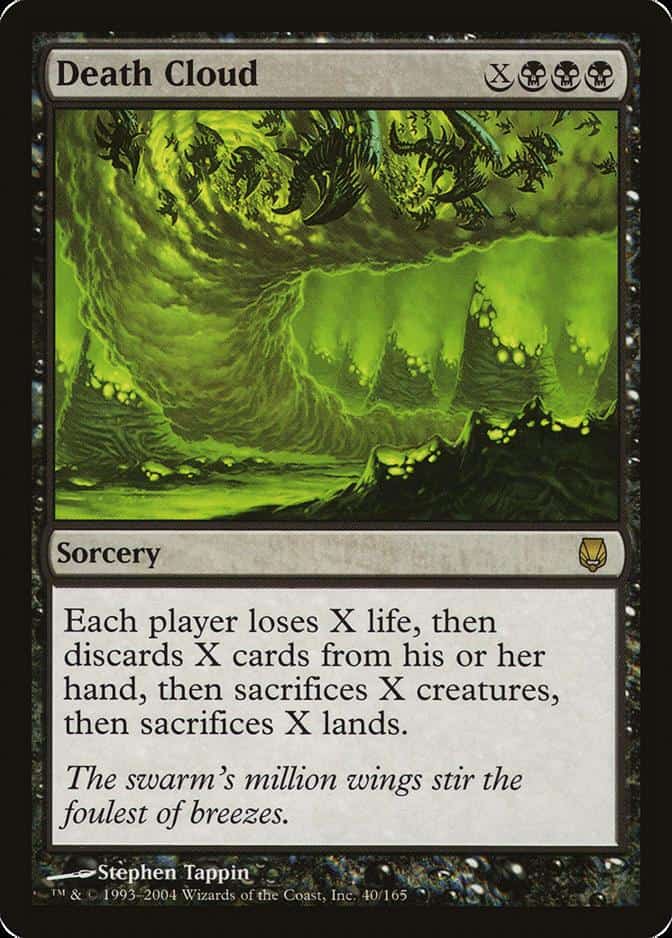
Each player loses X life, discards X cards, sacrifices X creatures, then sacrifices X lands.
Wizards.com – Gatherer – Magic: The Gathering.[4]
For example, a card like “Death Cloud” requires each “player” to take certain actions. Regardless of the number of Planeswalkers that aren’t or are in play, only you and your opponents will be required to perform the actions mandated by Death Cloud and you will only have to do so once.
Having Planeswalkers in play does not mean that you are required to repeat the action an additional time for every Planeswalker in play that you control.
Put simply, in a game of Magic, a “Player” can only ever refer to you, a team member, or one of your opponents.
Are Planeswalkers Spells: Hand, Stack, Battlefield
Planeswalkers are spells when they are on the “Stack”. As a general rule, all Magic The Gathering cards are considered spells once they have been cast and placed on the “stack”. A Planeswalker card that has become a spell by being placed on the stack can be countered by another player.
112.1. A spell is a card on the stack. As the first step of being cast, the card becomes a spell and is moved to the top of the stack from the zone it was in, which is usually its owner’s hand. A spell remains on the stack as a spell until it resolves, is countered, or otherwise leaves the stack.
Wizards.com[5]
This means, except for Land cards which are not “cast” but placed onto the battlefield and don’t use the Stack, all Magic cards will become spells when they are cast.
From the time between a Planeswalker card is cast until it resolves and enters the battlefield, it is considered a spell.
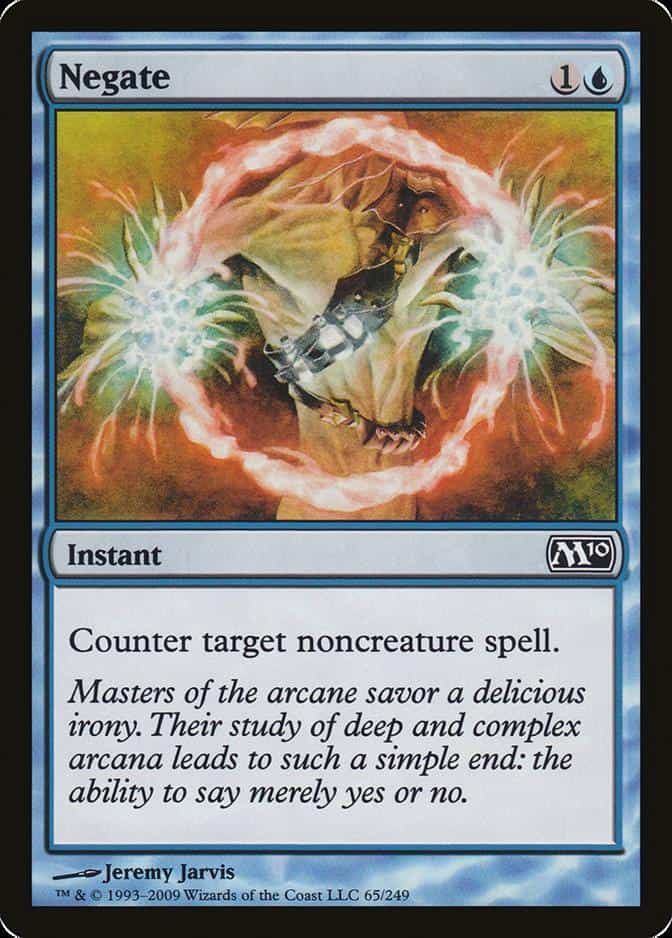
Counter target noncreature spell.
This is why spells like “Negate” will successfully counter a Planeswalker card as it states “noncreature spell”.
This can be somewhat confusing when you are talking to other Magic players as most players will only refer to non-permanent cards (Instant, sorcery) as “spells” in causal conversion.
This is technically not correct as we now know that any card that is cast and placed on the Stack is considered a spell by the rules of the game.
This is an important distinction to keep in mind when talking to players about cards versus reading the rules text on a card.
Are Planeswalkers Nonland Permanent: How To Tell
As a whole, Planeswalkers are nonland permanents once they have entered the battlefield. Planeswalkers are considered “Cards” in hand, “Spells” on the stack, and “Permanents” once in play. Planeswalkers are not Lands and therefore are “Nonland permanents”.
Since Planeswalkers are permanents once they are in play, any card that can target or affect a Nonland permanent can be used on Planeswalkers.
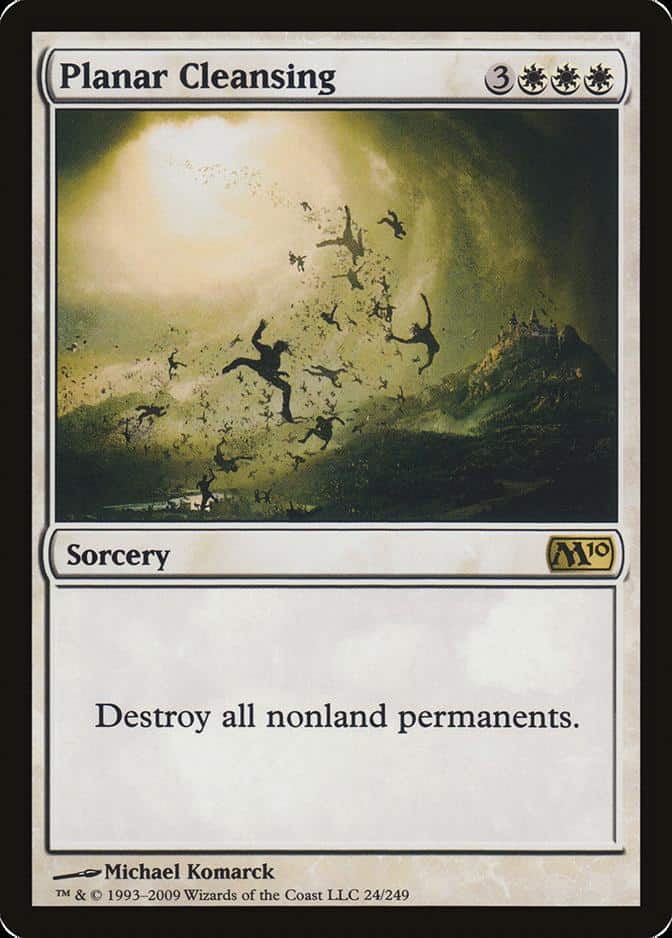
Destroy all nonland permanents.
For example, a card like “Planar Cleansing” that destroys all “nonland permanents” on the resolution will cause all Planeswalkers in play to also be destroyed.
It’s always important to double-check what card type a spell will affect before you cast it.
Although the card may not specifically state “Planeswalker” in the rules text, that doesn’t always mean Planeswalkers will be unaffected.
Are All Planeswalkers Legendary: Rule Change
As a general rule, all Planeswalkers are legendary. Some Planeswalker cards may not feature the wording “Legendary” on them, however, even if the word “Legendary” does not appear on a Planeswalker card, that Planeswalker card is still classified as legendary within the rules of the game.
The confusion around this question often comes from the fact that Planeswalker cards haven’t always been considered “Legendary” and the rules around them have changed several times.
If you are interested in knowing more about the “Planeswalker uniqueness rule” and how Planeswalkers changed to the new “Legend rule”, you can check out my full post on the topic here – Maximum Number of Planeswalkers in Play [Formats, Rules]
Are Planeswalkers Creatures [Rules, Abilities]
As a general rule, Planeswalkers are not creatures. Some Planeswalkers can become creatures using certain Loyalty abilities and there are creature cards that can transform into Planeswalkers. However, all Planeswalker permanents are not creatures by default.
This means that any spell that specifically targets or affects creatures will have no impact on Planeswalkers, unless that Planeswalker has become a creature.
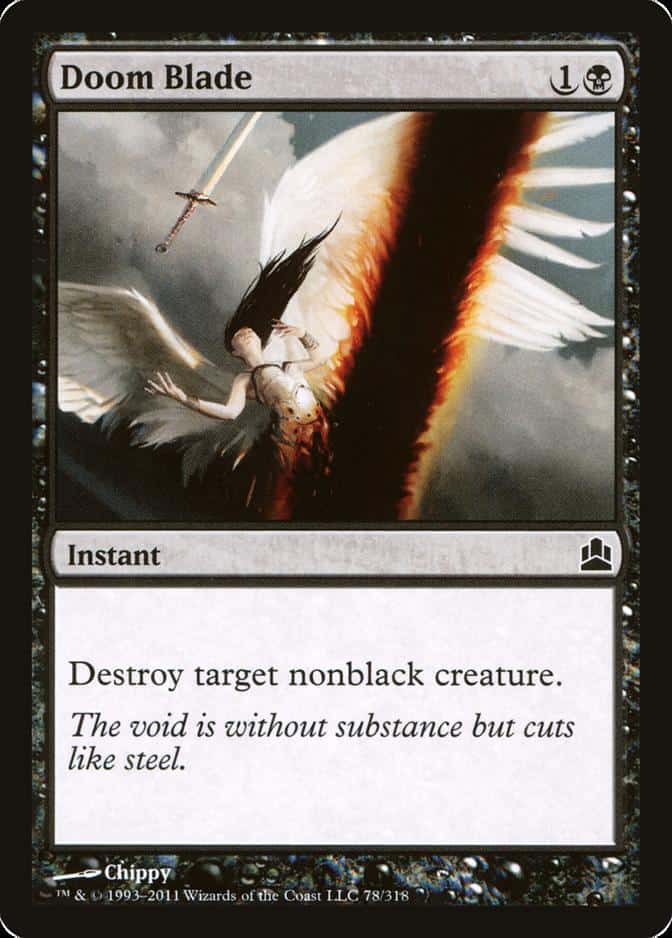
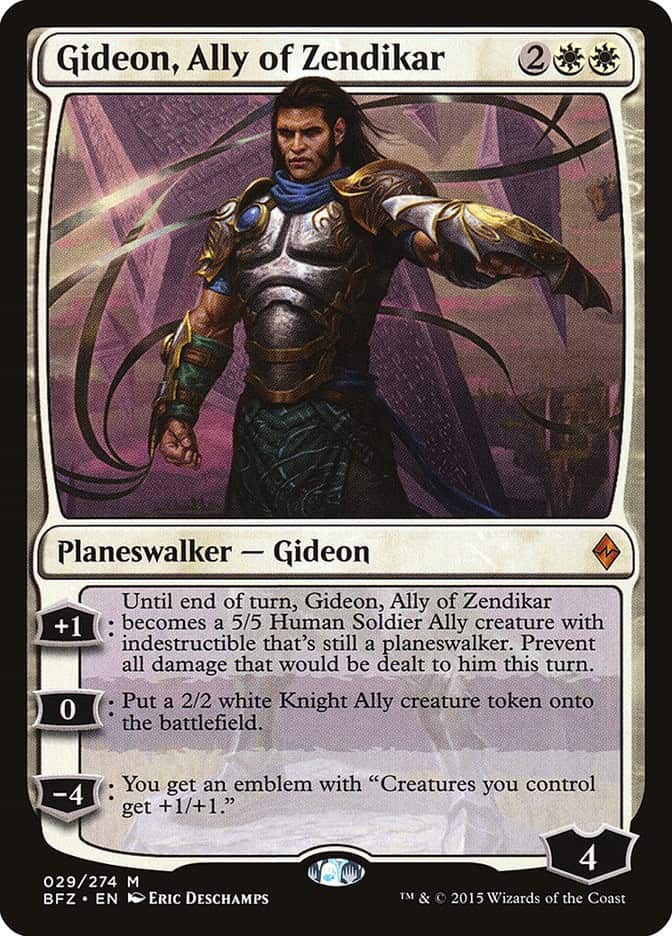
For example, in the case of “Doom Blade” and “Gideon, Ally of Zendikar”, Doom Blade is unable to target Gideon as he is not a creature.
However, once Gideon activates his +1 ability, Gideon will become a creature until the end of the turn.
This means that Gideon is now a legal target for Doom Blade as he has now become a creature – He is technically both a creature and a Planeswalker once his +1 ability has been activated.
Although now, you can technically cast and target Gideon with Doom Blade, it still won’t do much good.
When you activate Gideon’s +1 ability he also becomes “Indestructible“, so effects like Doomblade that say “destroy” won’t have any effect on creatures that have the “Indestructible” ability.
Planeswalkers that can become creatures can be a little tricky to get your head around at first; there are a few rules that you can get wrong pretty easily when you first start playing with them.
If you want to get a better understanding of the things you need to know about Planeswalkers that become creatures, I would recommend reading this article that tries to break down everything you need to know – Do Planeswalkers Have Summoning Sickness: Helpful Guide
Can Planeswalkers Be Targeted By Spells: Rule Change
As a general rule, Planeswalkers can be targeted by spells. Planeswalkers can only be targeted by spells that state “any target” or “target Planeswalker”. Due to a rule change, older cards that stated “player” have been changed to “player or planeswalker” and can now target Planeswalkers.
It’s not often that Magic makes large sweeping changes to the rules of the game, but the “Planeswalker redirection rule” fundamentally changed how many spells were able to target Planeswalkers.
Before this rule change, if you wanted to use a burn spell to do damage to a Planeswalker card, you would first need to target the player that controlled that Planeswalker card and then declare the damage was being done to the Planeswalker instead of the player.
306.7 Previously, planeswalkers were subject to a redirection effect that allowed a player to have noncombat damage that would be dealt to an opponent be dealt to a planeswalker under that opponent’s control instead. This rule has been removed and certain cards have received errata in the Oracle card reference to deal damage directly to planeswalkers.
Wizards.com[6]
With the new rules in place, you can only target Planeswalkers with spells that explicitly state “target Planeswalker” or “any target.”
Where things get a little confusing is that there are a lot of old cards out there that have been printed before this rule change and possess outdated wording on them.
As a general rule of thumb, if you run into any old cards that state “creature or player” their official rules text now states “any target” and can target Planeswalkers.
Particularly keep your eye out for old burn spells as they were the group of cards that were most affected by this rules change.
Wizards of the Cost’s official website has an entire page dedicated to listing out every card that was affected by the removal of the “Planeswalker redirection rule”, so if you are ever unsure about a certain card you can keep it here – Magic: The Gathering – Oracle Changes.
If you are still a little confused on how this rule change works, check this short video below that should help to clear up any confusion that you still may have.
How To Destroy Planeswalker [Spells, Attacking]
As a whole Planeswalkers can be destroyed by reducing their loyalty counters to 0 or using spells that can remove Planeswalkers from play. You can reduce a Planeswalker’s loyalty counters by dealing damage through spells or attacking them with creatures.
306.9 If a planeswalker’s loyalty is 0, it’s put into its owner’s graveyard.
Wizards.com
Due to how powerful Planeswalkers can be in a game of Magic, it’s important to understand just how to get rid of them when they are being used against you.
The simplest way to destroy a Planeswalker is to use an ability or spell that explicitly destroys Planeswalkers.

Even if your deck doesn’t possess any spells that let you outright destroy Planeswalkers, as long as you have creatures in play, you can always attack an opponent’s Planeswalkers.
306.6 Planeswalkers can be attacked.
Wizards.com
Just like you can attack your opponent and reduce their life total to 0, you can also attack a Planeswalker through combat and deal damage to it in order to reduce the number of loyalty counters it possesses to zero – removing it from the battlefield.

306.8 Damage dealt to a planeswalker results in that many loyalty counters being removed from it.
Wizards.com
So just remember, if you need to destroy a Planeswalker, use a spell or use your combat step to attack a Planeswalker instead of your opponent.
How To Protect Planeswalkers [Counters, Blocking]
As a whole, you can protect Planeswalkers with counterspells or by using creatures you control to block attacks. Some Planeswalkers can summon creatures that can block and protect them or have abilities that can destroy an opponent’s creatures.
Just as it is often important that you have a way to remove your opponent’s Planeswalkers from the battlefield to avoid losing the game, it can be equally important to keep your Planeswalkers alive.
Planeswalkers are powerful cards that can give 1 player a serious advantage, especially if it is the only Planeswalker in play.
That’s often why in a game of Magic, your opponents will immediately turn their attention to getting rid of any Planeswalker that you have cast and entered the battlefield.
Playing your Planeswalkers onto an empty board when your opponents don’t have any creatures in play is ideal, but not always an option. It’s a good idea if you plan on casting a Planeswalker to already have a creature or in play that can block any incoming attacks.
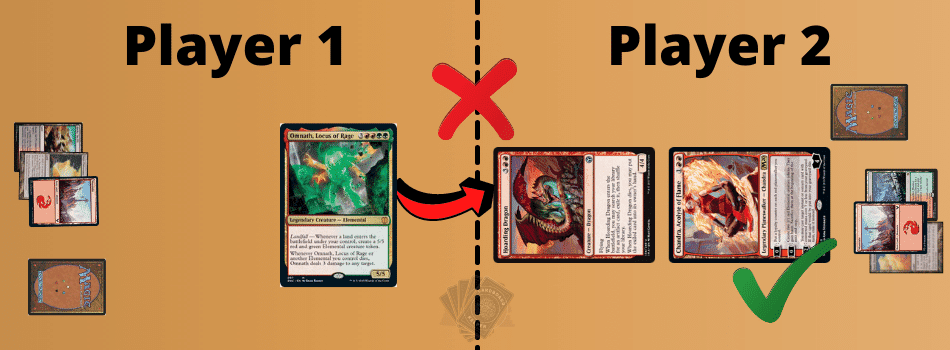
When Planeswalkers enter play, creatures often take on a bodyguard-style role to keep your Planeswalkers alive as long as possible or until you win the game due to the overwhelming value a Planeswalker will often generate in a game.
It’s not always correct to save your Planeswalkers from being attacked, but more often than not, using your creatures as blocking shields for your Planeswalkers will keep them alive to help you win the game.
If you have a card that can protect a permanent or are playing blue, it can be a good idea to hold up a counterspell when you have the option to with a Planeswalker in play.
More and more spells are being printed in Magic now that can destroy Planeswalkers and so, just because your opponent doesn’t have any creatures in play to attack your Planeswalkers, doesn’t mean they are safe!
Often, creatures can’t block or protect your Planeswalkers from spells that can destroy them, you’ll need a spell of your own to protect against your opponent’s spells.
There are a lot of options to do this depending on the colors you’re playing, but the important thing to remember is that protecting Planeswalker that you have in play can sometimes be a path to victory.
Planeswalkers are an incredibly interesting card type to play with, but they can be a bit confusing to get your head around when you first start playing Magic.
Most of the important information you need to know about Planeswalkers have been covered in this post, but having a more detailed explanation of how some of the finer rules on how Planeswalkers work can help you develop and become a better player.
If you are looking for even more information about Planeswalkers, check out some of the suggested posts linked below to help you on your journey to becoming a better Magic player.
Also Read: How Many Planeswalkers Can You Have In A Deck: [Maximum]
